Best Night Sky Events of January 2017 (Stargazing Maps)
See what’s up in the night skywatching for January 2017, including stargazing events and the moon’s phases, in this Space.com gallery courtesy of Starry Night Software.
Moon Phases
Thursday, January 12 at 6:34 a.m. EST – Full Wolf Moon

The January full moon, known as the Wolf Moon, Old Moon, or Moon after Yule, always shines in or near the stars of Gemini. It rises around sunset and sets around sunrise. The January moon reaches full phase on Thursday morning, so it will appear full on both Wednesday and Thursday evening. This is the only night in the month when the moon is in the sky all night long. The rest of the month, the moon spends at least some time in the daytime sky.
Thursday, January 19 at 5:13 p.m. EST – Last Quarter Moon

After full phase, the moon is now waning, illuminated less every evening. At last quarter the moon rises around midnight and sets near noon. Morning commuters might take note of it, shining high in the south against the blue daytime sky. The bright half is now on the left-hand side, towards the eastern dawning sun.
At last quarter, the moon is positioned ahead of the Earth in our trip around the sun. When you see it in the sky, keep in mind that about 3½ hours later, earth will occupy the same point in space where the moon is now. After last quarter, the moon begins to traverse the last quarter of its orbit in its trip around the earth as it approaches new moon.
Friday, January 27 at 7:07 p.m. EST – New Moon
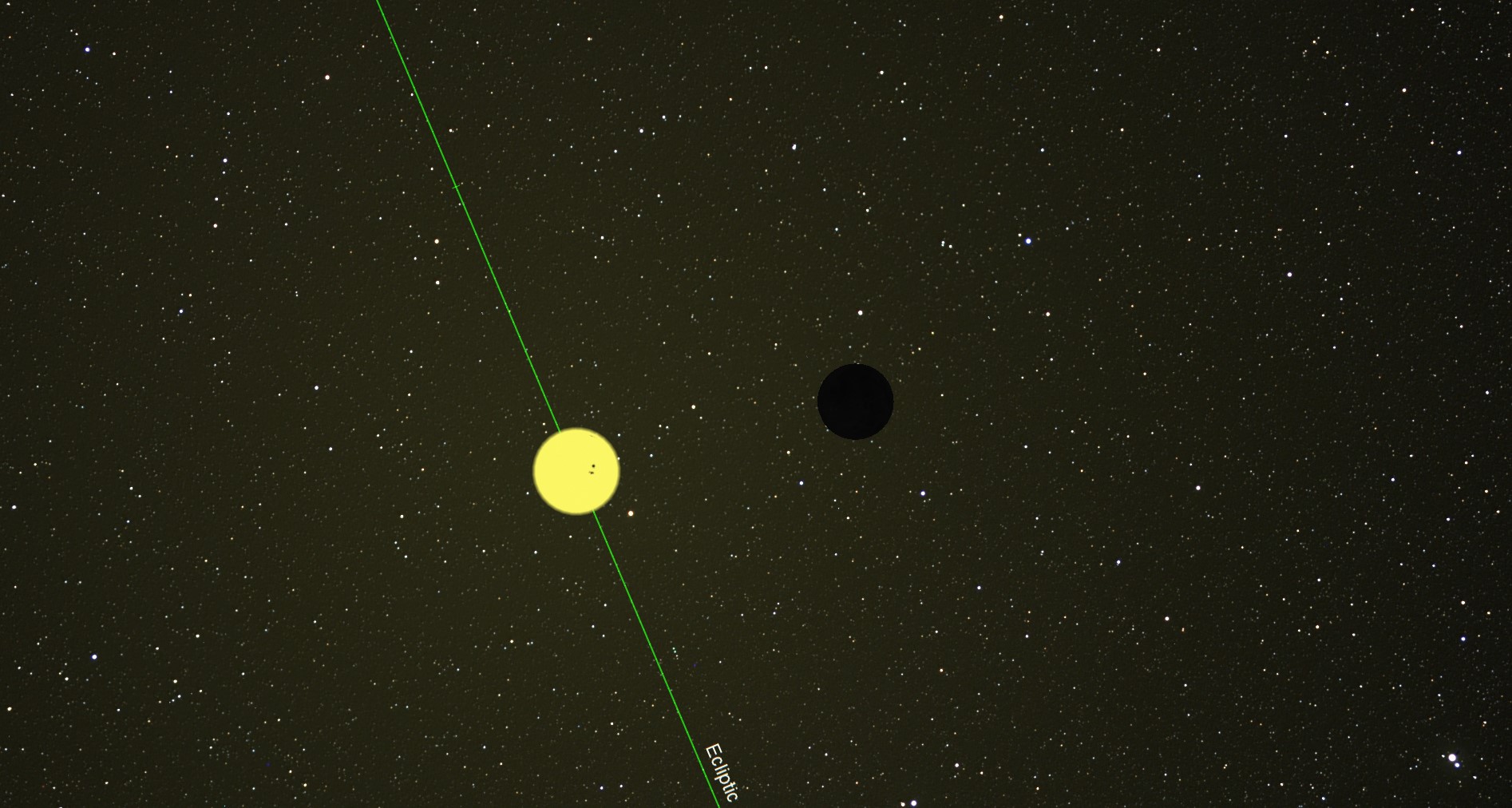
The moon’s orbit carries it between the earth and sun and sits in the same region of the sky where the sun is. Sunlight is only reaching the side of the moon that is turned away from us, so as a consequence it cannot be seen. Due to the moon’s tilted orbit, it usually passes above or below the sun, instead of eclipsing the sun. Starting a day or two after new moon, you might catch a glimpse of the slender sliver of a waxing crescent moon low near the western horizon, as it gradually pulls away from the sun’s vicinity and shifts toward the east.
Observing Highlights
Sunday, January 1 evening – See Mars and Neptune in your telescope
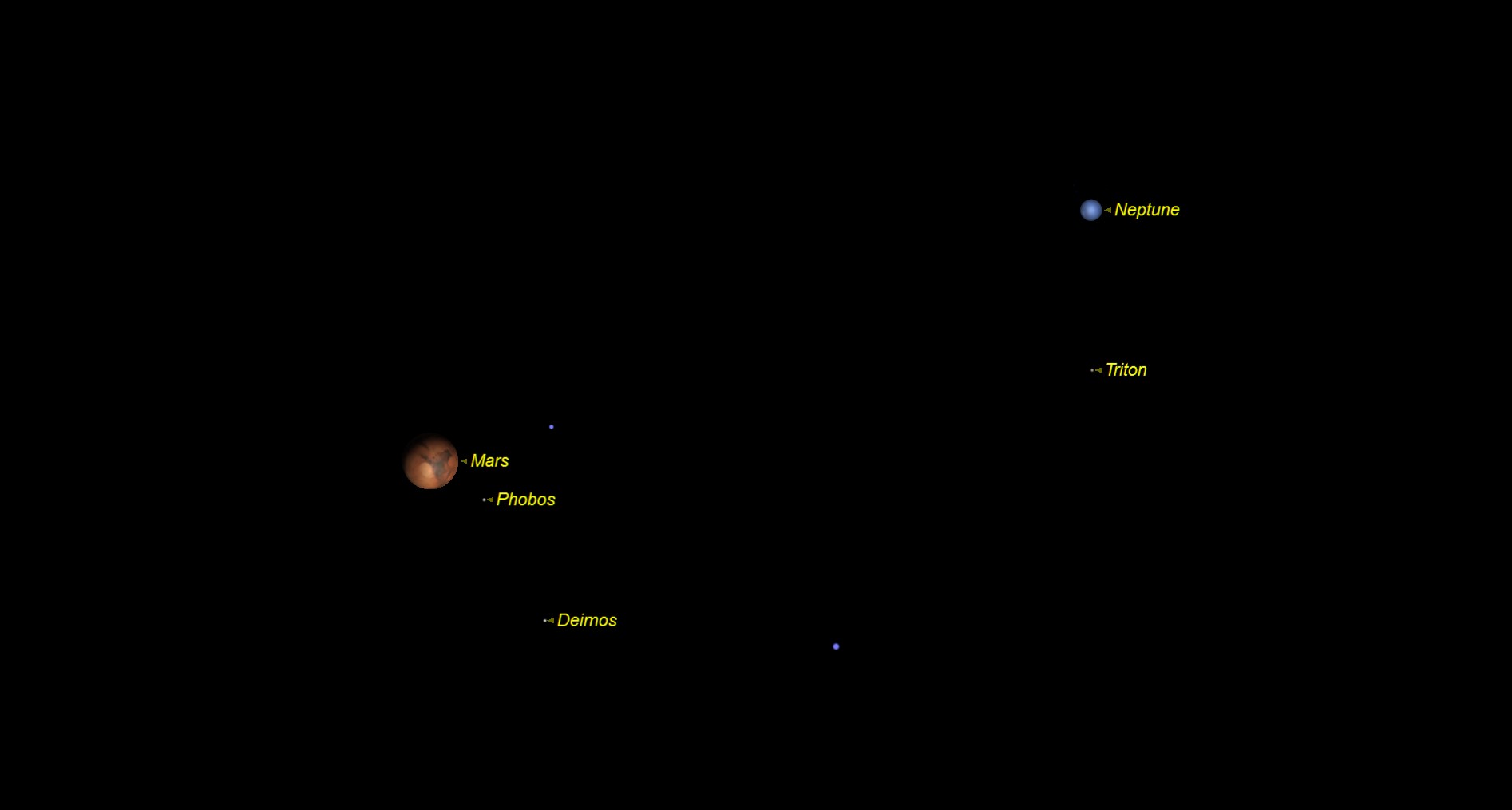
Around 2 am Eastern Standard Time on Sunday, January 1st, Mars will pass very close to Neptune, and they’ll both easily fit into the field of view of a small telescope’s eyepiece. For observers in eastern North America, the two planets will set while Mars is still 8 arc-minutes below Neptune – still a very tight telescopic grouping. Hawaiians will see the planets’ closest separation of only 1 arc-minute (1/30th of the moon’s diameter).
Monday, January 2 evening – Crescent Moon between Venus and Mars

In the western sky after sunset on Monday, January 2, the crescent moon will form a line with Venus and Mars, sitting 8 degrees to the upper left of bright Venus, and 4 degrees to the lower right of dim Mars. Venus sets first about 8:45 pm local time.
Tuesday-Wednesday, January 3–4 midnight to dawn – Quadrantid Meteor Shower

The annual Quadrantid meteor shower runs from Dec 30th to Jan 12th. One of the most reliable in the year, it peaks on the morning of January 4, so the best times to observe will be between midnight and dawn that morning. The moon will be a waxing crescent on the peak dates, producing a darker sky and a better show!
Thursday, January 12 evening – Venus at Greatest Eastern Elongation

On the evening of Thursday, Jan 12th, Venus will reach its widest separation east of the Sun. On that evening, it will reach its highest point in the night sky, allowing us to view it with the least amount of turbulence caused by the Earth’s atmosphere. As a bonus, Venus will also be located less than 23 arc-minutes to the upper right of Neptune. Both planets should fit nicely into the field of view of a low power eyepiece in a small telescope. Venus will exhibit a half phase.
Saturday, January 14 evening – Moon meets Regulus
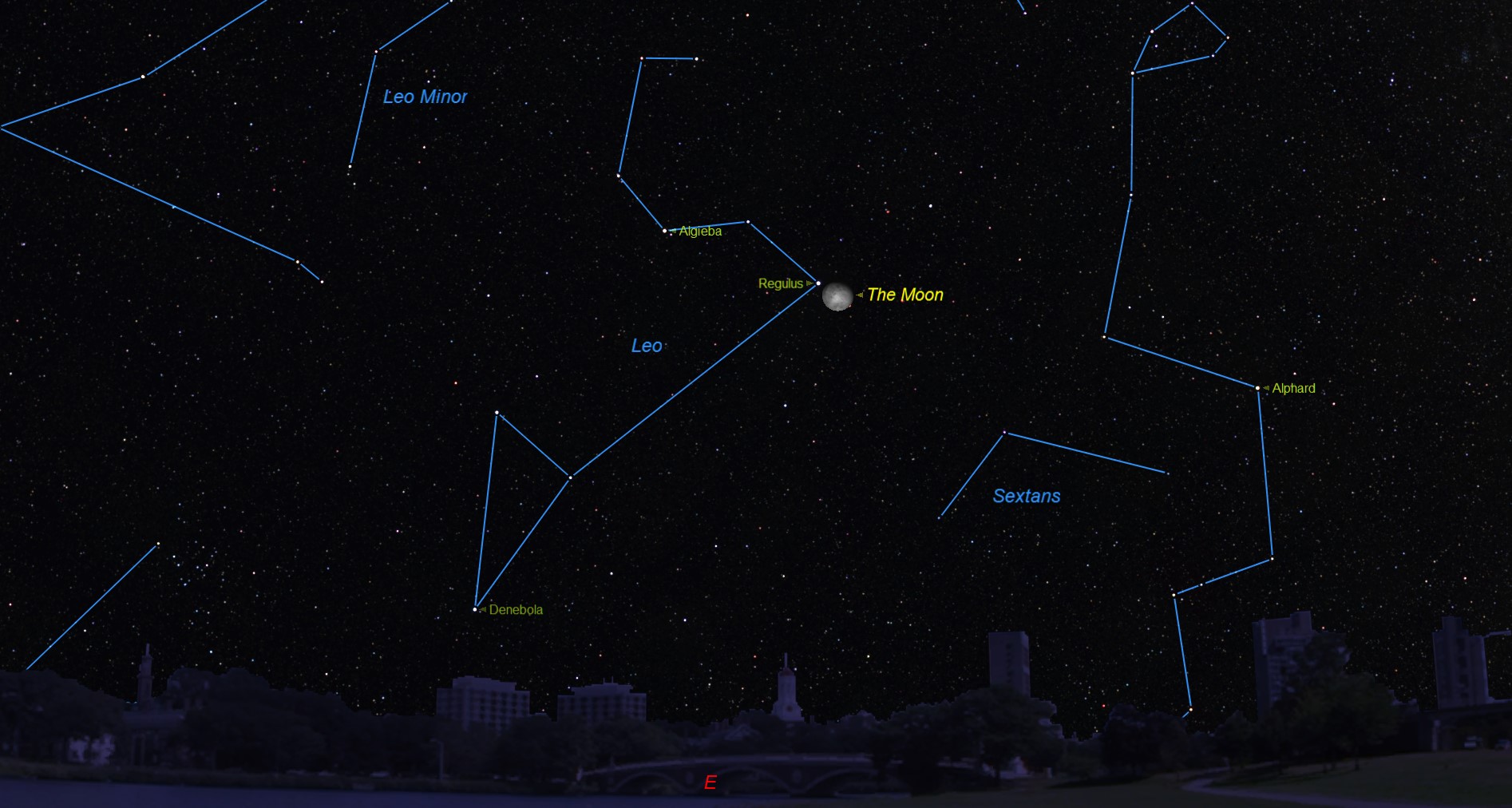
In the eastern sky, on the evening of Saturday, January 14, the waning gibbous moon will sit near the naked eye star Regulus in Leo. Minimum separation occurs about 10 pm EST, when the moon is only 2 degrees to the lower right of the star. Observers in southern South America will see the moon occult Regulus.
Tuesday, January 17 evening – Asteroid Vesta at Opposition

On Tuesday, January 17, the large asteroid Vesta reaches opposition, the date when it is closest to earth and brightest. At apparent magnitude 6.1, it is observable with naked eyes, binoculars, and small telescopes. Its motion through the background stars can be seen by observing it on separate evenings (shown here from Nov 1, 2016 to Mar 5, 2017).
Thursday, January 19 after 1 am – Moon meets Jupiter

In the eastern sky from 12:30 am local time to dawn on Thursday, January 19, the last quarter moon will sit about 2 degrees north (to the upper left) of Jupiter. Both bright objects will be easy to see with naked eyes.
Thursday, January 19 before dawn – Mercury at Greatest Western Elongation

On Thursday, Jan 19, before dawn, Mercury will reach its greatest angle west of the sun. Through most of January, the planet is observable in the eastern sky for about an hour before sunrise. With Mercury near a shallow ecliptic, this apparition is less than ideal for northern hemisphere observers, but quite good from the southern hemisphere.
Tuesday, January 24 pre-dawn – Old Moon meets Saturn

In late January, the ringed planet Saturn will be sitting very low in the southeastern sky before dawn. On Tuesday, January 24, the old crescent Moon will sit only 3 degrees northeast (to the upper left) of the planet. The best viewing times are between 5:45 and 6:45 am local time. Mercury will be located some 16 degrees to the lower left of them.
Tuesday, January 31 evening – Moon, Mars, and Venus

On the evening of Tuesday, January 31, the waxing crescent moon will form a tight triangle with Mars and Venus in the southwestern evening sky, easily fitting into a binocular field of view. Keep an eye out for the earthshine illuminating the moon’s darkened disk.
Planets

Mercury spends January in a morning apparition. This is a poor one for northern hemisphere observers due to the shallow ecliptic, but a good one for southern hemisphere viewers. Its visibility worldwide improves as the planet swings wider of the sun until January 19 when it reaches greatest western elongation. Then it begins to swing sunwards again. During the month, while its disk diameter decreases, it brightens and waxes from a slim crescent to a nearly full disk. The waning crescent moon lands 6 degrees to the east of Mercury on January 26.

Venus has been gracing the western evening sky for months. For most of January, it traverses the stars of Aquarius. On the evening of Thursday, Jan 12th, Venus will reach its widest angle east of the Sun. That evening, it will reach its highest point in the night sky, allowing us to view it with the least amount of distortion caused by the Earth’s atmosphere. As a bonus, Venus will also be located less than 23 arc-minutes to the upper right of Neptune. Both planets should fit nicely into the field of view of a low power eyepiece in a small telescope.
On the evening of Saturday, Jan 14th, Venus will exhibit an exactly half-illuminated phase, similar in shape to a first quarter Moon. Strong binoculars might hint at the asymmetry, but a small telescope will definitely show it. Around the time of greatest eastern elongation, Venus is heading straight towards the Earth.
So it will be growing in disk diameter and brightening as we close the distance between us. After sunset on January 1 and 2, the young crescent Moon will pass to the north of Venus, sitting 5.5 degrees northwest (to the lower right) of Venus on the 1st and 6.5 degrees east (to the upper left) of Venus on the 2nd. On Jan 31st, the moon returns to form a tight triangle with Venus and Mars.

Throughout January, Mars holds its place as an easily visible reddish object in the evening southwestern sky, setting at 9:50 pm local time. At 2 am Eastern Standard Time on Sunday, January 1st, Mars will pass within only 1 arc-minute (1/30th of the moon’s diameter) of Neptune, and they’ll both easily fit into the field of view of a telescope’s eyepiece – a study in blue and red! Even a small telescope will be sufficient to see the two planets at the same time, though Neptune will be 400 times fainter.
Observers on the west coast and the Pacific Ocean region will be able to see Mars and Neptune at closest approach. Unfortunately, for eastern North America, the two planets will set about 9:45 pm, while Mars is still 8 arc-minutes below Neptune – still a very tight telescopic grouping.
On January 19, its eastward motion carries it from Aquarius and into Pisces. Through the month, it decreases in brightness and disk size as we increase our distance from it. On January 31, the waxing crescent moon will form a tight triangle with Mars and Venus, easily fitting in a binocular field of view.
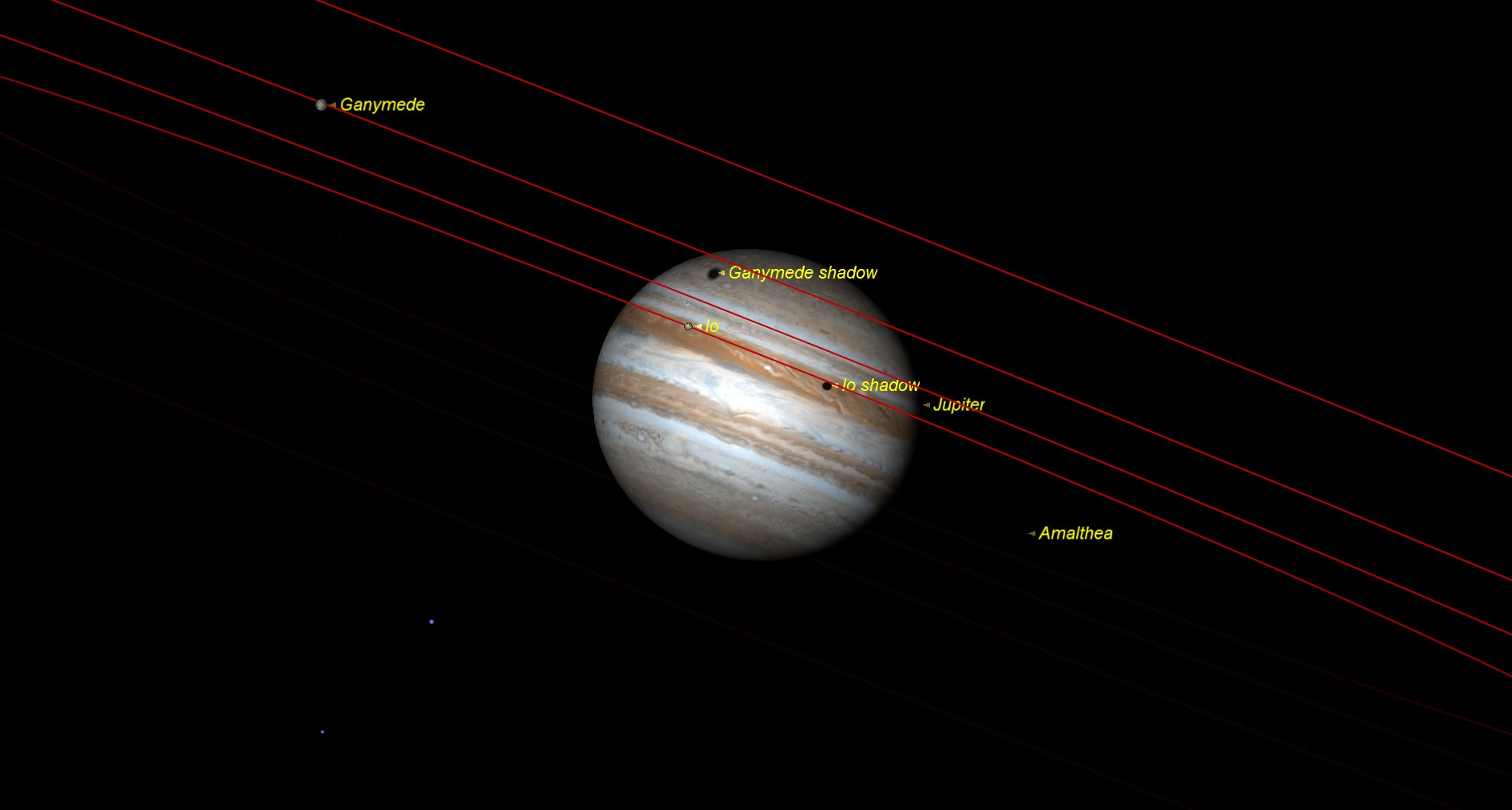
Jupiter, just above the bright star Spica in Virgo all month, rises at 1:15 am on January 1 and sits midway up the southern sky by sunrise. For the last week of January, it rises before midnight. The bright planet is easy to see, even as the sky becomes lighter before sunrise. On the morning of Thursday, January 19, the moon will sit less than 3 degrees north (to the left) of Jupiter.
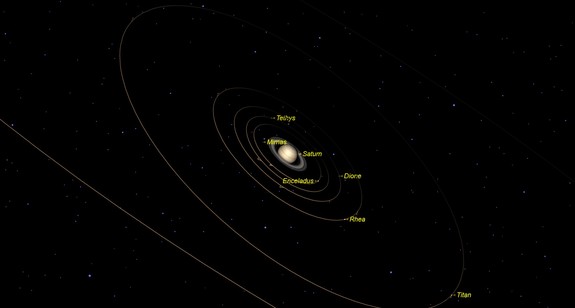
Saturn, in southern Ophiuchus, begins January embedded low in the eastern dawn twilight. Its visibility steadily improves through the month as it climbs away from the sun. On Tuesday, January 24, the old crescent Moon will land only 3 degrees north (to the upper left) of the planet.

Throughout January, Uranus is in the southwestern evening sky, in the constellation of Pisces. It’s visible from nightfall until late evening. At magnitude 5.8, it is not readily visible with unaided eyes, but binoculars or a small telescope can reveal it as a tiny blue-green dot.

zis in the southwestern evening sky in the constellation of Aquarius. It is a very dim, nearly 8th-magnitude object visible only with very good binoculars or a telescope. In early January it is observable from nightfall until 9:30 pm local time, but it sets before 8 pm local time at month’s end.
At about 2 am Eastern Standard Time on Sunday, January 1st, Mars will pass very close to Neptune, and they’ll both easily fit into the field of view of a telescope’s eyepiece. For observers in eastern North America, the two planets will set while Mars is still 8 arc-minutes below Neptune, but Hawaiians will see the planets closest pass of only 1 arc-minute (1/30th of the moon’s diameter) from one another.
Skywatching Terms
1. Asterism:
A noteworthy or striking pattern of stars within a larger constellation.
2. Degrees (measuring the sky):
The sky is 360 degrees all the way around, which means roughly 180 degrees from horizon to horizon. It’s easy to measure distances between objects: Your fist on an outstretched arm covers about 10 degrees of sky, while a finger covers about one degree.
3. Visual Magnitude:
This is the astronomer’s scale for measuring the brightness of objects in the sky. The dimmest object visible in the night sky under perfectly dark conditions is about magnitude 6.5. Brighter stars are magnitude 2 or 1. The brightest objects get negative numbers. Venus can be as bright as magnitude minus 4.9. The full moon is minus 12.7 and the sun is minus 26.8.
Terminator: The boundary on the moon between sunlight and shadow.
Zenith: The point in the sky directly overhead.
Night Sky Observing Tips
1. Adjust to the dark:
If you wish to observe faint objects, such as meteors or dim stars, give your eyes at least 15 minutes to adjust to the darkness.
2. Light Pollution:
Even from a big city, one can see the moon, a handful of bright stars and sometimes the brightest planets. But to fully enjoy the heavens — especially a meteor shower, the constellations, or to see the amazing swath across the sky that represents our view toward the center of the Milky Way Galaxy — rural areas are best for night sky viewing. If you’re stuck in a city or suburban area, a building can be used to block ambient light (or moonlight) to help reveal fainter objects. If you’re in the suburbs, simply turning off outdoor lights can help.
3. Prepare for skywatching:
If you plan to be out for more than a few minutes, and it’s not a warm summer evening, dress warmer than you think necessary. An hour of observing a winter meteor shower can chill you to the bone. A blanket or lounge chair will prove much more comfortable than standing or sitting in a chair and craning your neck to see overhead.
4. Daytime skywatching:
When Venus is visible (that is, not in front of or behind the sun) it can often be spotted during the day. But you’ll need to know where to look. A sky map is helpful. When the sun has large sunspots, they can be seen without a telescope. However, it’s unsafe to look at the sun without protective eyewear.
Article Orginally Written by Karl Tate/SPACE.com



